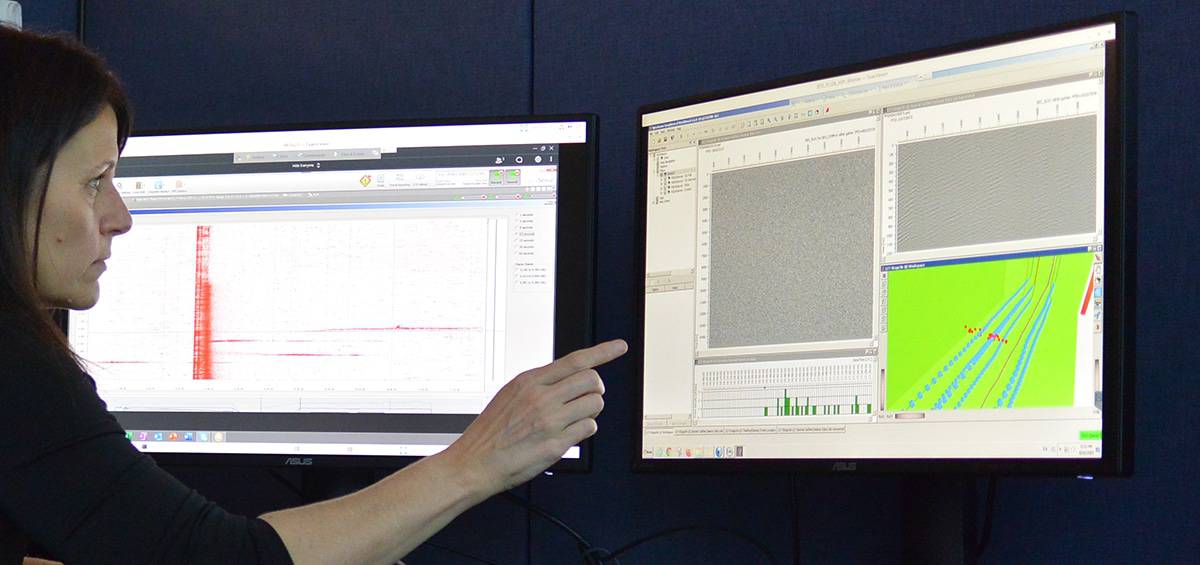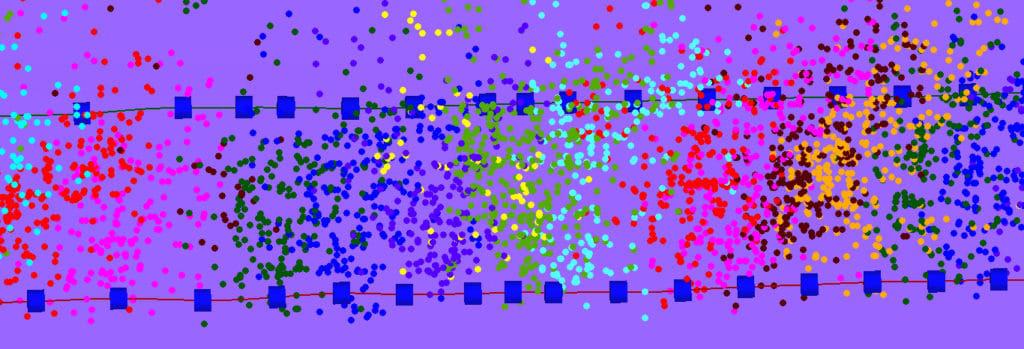CASE STUDY
OptaSense Delivers 3D Microseismic Mapping from Multi-well DAS Monitoring

Fiber-optic sensing provides cost-effective alternative
Problem:
- Unprofitable unconventional resources
- Single point measurements or snapshots
- Conflicting diagnostic tools
- Questionable geometry and orientation assessment
Solution:
- OptaSense Crosswell Strain Monitoring
- High resolution strain data
- Real time tracking of the fracture network formation
- Real time monitoring of operational aspects of the completions
Value Delivered:
- Better understanding of complex interactions
- Identification of stimulated reservoir zones and improved stage offsetting
- Determination of optimal completion design
- Identification of stage isolation issues
The Challenge
Reservoir monitoring requires the integration of multiple disciplines and technologies. Microseismic monitoring, when integrated with other measurements, can provide valuable actionable data to both geoscientists and engineers. However, cost and operational complexity can often be a barrier to including microseismic in a reservoir monitoring plan.
Geophone microseismic monitoring has been the standard acquisition practice for over a decade. Data collected from geophone arrays is greatly beneficial for understanding fracture propagation and estimates of stimulated reservoir volume. However, the acquisition process can be costly. A microseismic array rig-in and rig-out typically requires halting operations, adding cost and bringing HSE risks. Geophones also have limited aperture and a relatively small number of sensors per well, which results in significant location uncertainty. While additional arrays can be added, this adds to the cost and complexity.
Distributed Acoustic Sensing (DAS) fiber-optic arrays have several advantages over geophones. The full length of the fibered well can be used for microseismic detection and mapping, giving thousands of channels of data to help detect weak events and reduce event location uncertainty. When fiber is permanently installed behind casing, acquiring microseismic data simply requires connecting a fiber optic interrogator and recording data, with no interruption to operations or HSE risk.
An oil and gas operator developing a complex unconventional reservoir at different target formations required the detection and 3D mapping of microseismic events during the completion. The operator required wide aperture microseismic to assess natural faulting in a complex structural play. Furthermore, it required that the microseismic measurements be analyzed simultaneously with low frequency strain to assess the entire geomechanics of the subsurface.
The Solution
Optasense was chosen to record dual stream DAS data from three fibered wells simultaneously. The first data stream was used for crosswell communication strain whereas the second one consisted of microseismic data for 3D mapping. Recent improvements in high sensitivity distributed sensing interrogators allowed for microseismic detection at levels not previously available. Optasense’s industry leading DAS interrogators detected abundant seismicity during fracture stimulation.
Improvements in IU technology can be optimized for the recording environment (i.e. noisy producing wells, multi-well pads or long-distance fibers) resulting in further noise floor reductions and even greater detectability depending on the geologic setting of interest.
Leveraging advances in microseismic processing and applying those techniques to fiber-optic microseismic allows for fast and accurate 3D mapping of microseismic events in space for pads with two or more fiber-optic arrays.
Array bias, commonly seen with geophones, was greatly reduced for fiber-optic microseismic as the full length of the fibered wells is utilized in mapping. Typically, events recorded during treatment will be occurring at similar distances to the monitoring fiber(s). Also, as fiber-optic datasets utilize the full well aperture as an array, location errors are lower and more consistent for all located microseismicity. Both the lower sensitivity to array bias and lower location errors together reduce the dependency on representative datasets for large regional analysis. In this current project thousands of detected and 3D mapped microseismic events not only provided a picture of the treatment but of the structural features driving some of the reservoir seismicity.

Microseismic event locations derived from a fibered treatment well.
Delivered Value
DAS recorded microseismic delivered comparable results to standard geophone arrays with few trade-offs and significant gains from additional coverage and strain measurements. Lower detectability didn’t reduce the quality of the analysis as geophone representative datasets removed much low magnitude and far offset seismicity. Furthermore, fiber-optic recording involves fewer processes than traditional geophone recordings and can pose a reduced operational and HSE risk during acquisition.
Finally, DAS recorded microseismic was combined with crosswell communication datasets and hydraulic frac profile datasets. Analysis of these two additional datasets, in addition to microseismic, allowed for a more inclusive interpretation than what would have been available and required little additional equipment. The use of the same fiber-optic infrastructure and Interrogator technology for dual measurement monitoring allowed the operator to lower acquisition costs while providing additional value to both engineering and geoscience groups in the organization.
For more information, please contact your OptaSense representative or visit optasense.com/oilfield-services/borehole-seismic-services/microseismic-monitoring/

